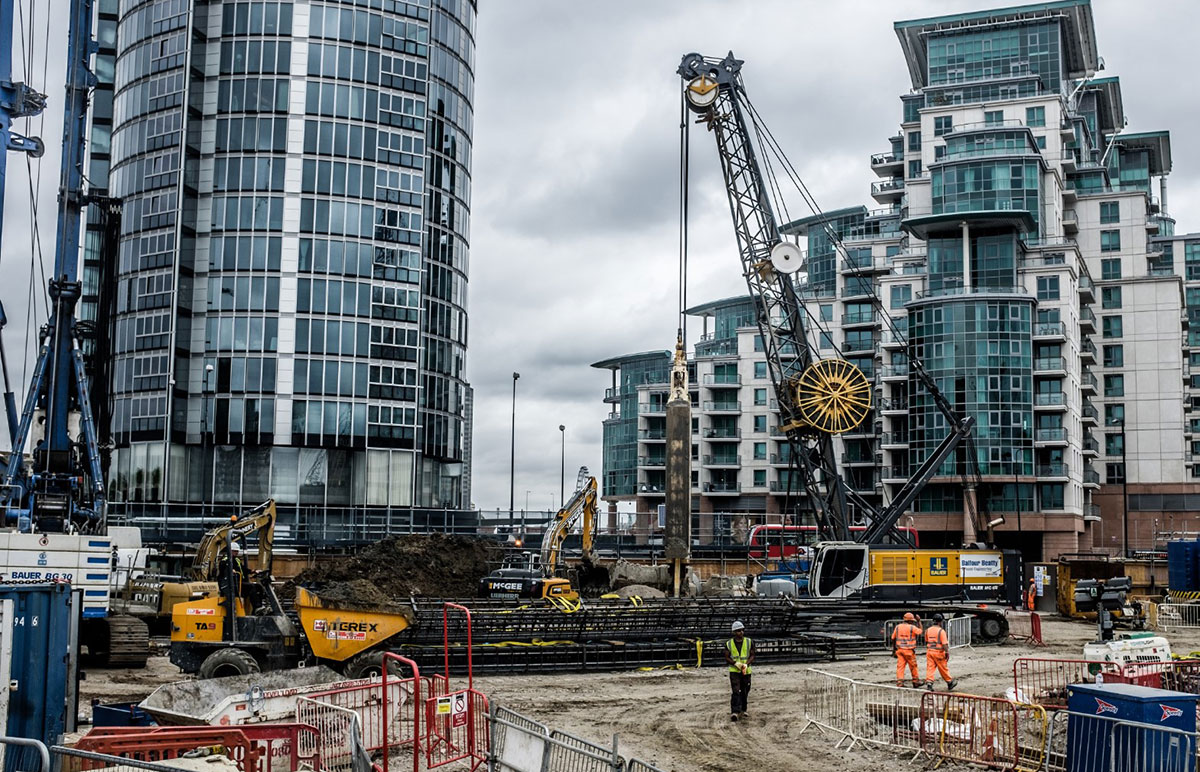Geotheta Can Be Fun For Anyone
All About Geotheta
Table of ContentsThe Single Strategy To Use For GeothetaEverything about GeothetaIndicators on Geotheta You Should KnowThe smart Trick of Geotheta That Nobody is Talking About
They team up with civil designers, structural engineers, engineers, and other experts to incorporate geotechnical considerations into the overall job style and building process. This calls for reliable teamwork, sychronisation, and communication to ensure that the geotechnical aspects straighten with the job objectives and meet governing requirements.Mining & Products Design: Principles of exploration, penetration prices, and variables impacting the choice of drilling approach. Attributes of explosives, shooting systems and blast patterns. Blasting techniques in surface area and underground operations. Special blowing up strategies at excavation boundaries. Resonance and sound control. Mechanical and continuous methods to fragmentation, including longwall shearing and fullface boring.
Modelling of piece and fragment dimension distributions; comminution as a transfer feature. Comminution innovation: squashing, grinding, size category. Integrated analysis of fragmentation and comminution procedures. Used by: Mining & Products Engineering.
The Basic Principles Of Geotheta
Bachelor's level programs in civil, geotechnical, geological, and environmental engineering normally last 4 years and consist of general education courses in English, social scientific research, and the liberal arts, as well as courses in advanced maths, structural geology, and fluid mineralogy. (https://www.merchantcircle.com/blogs/geotheta-miami-fl/2024/8/Why-Geotechnical-Engineers-at-Geotheta-Are-Your-Best-Bet/2781881)
Geotechnical engineering includes the analysis of the dirt and rock problems at a certain site, and their effects for the development of that site. As a lot of frameworks rely upon the ground for assistance, it is without surprise that an in-depth understanding of the ground problems, and the suitability of structure systems, are vital to the lasting security and performance of the structure or structure.
Specialising in the investigation of geological formations and ground behaviour, geotechnical designers perform clinical investigations and screening to recognize the impact these geological developments might have on the style and building of structure, civil and infrastructure jobs. This knowledge is critical for the design and building and construction of buildings, roads, passages, dams, bridges, and water system and sewer system.
The geotechnical group at Douglas Allies consistently consult with architects, design engineers, programmers, and building contractors to make referrals on layout and advancement proposals to ensure that the built structures are appropriately created for the ground conditions. As an example, the style of footing systems needs to think about the weight of the structure, the ability of the ground to sustain that weight along with motion tolerances and efficient building.
The Main Principles Of Geotheta
This task is substantially simplified by the use of our Douglas Map geospatial platform which makes this info readily accessible in a simple to use web internet browser user interface. A geotechnical engineer will guide the drilling of boreholes and test pits to accumulate dirt and various other examples, and likewise evaluate surface features and ground direct exposures to form a geotechnical version of the subsurface problems.
Depending on the job type and ground problems experienced, laboratory screening might to name a few points assess stamina, compressibility, sensitivity and/or leaks in the structure of soil and rock examples. Hereafter data is collected and looked at, the results are used for a geotechnical model of the site, which is normally presented as sections across the website.

A geotechnical investigation naturally can just assess the ground problems at the areas drilled or dug deep into. All-natural variants in soil and rock problems can take place across a site and in between examination places. It is consequently good practice that the geotechnical designer be kept throughout building and construction of the project to offer on-site verification that the ground problems encountered follow the assumptions and suggestions given in the geotechnical examination record.
Not known Facts About Geotheta
Geotechnical engineers use their thorough expertise of soil and rock to evaluate risk and address issues on varied framework projectsGeotechnical design is a specialist branch of civil design which looks at the behaviour of earth products and the application of soil and rock technicians. Tailings Engineer. As a geotechnical engineer, you will certainly examine the physical, mechanical and chemical residential or commercial properties of dirt and rock in order to develop structures, keeping frameworks and earthworks
Geotechnical engineering is carefully linked to and overlaps with, both design geology and ground design - https://www.huntingnet.com/forum/members/geotheta.html. It's feasible to specialise in geotechnics or benefit a geotechnical business but be called a design rock hound or a ground designer. As a geotechnical designer, you'll need to: construct and preserve relationships with clients and various other specialists included in the site, throughout each projectmaintain safety and security standards resource on site bear in mind price implications when you make recommendationsstudy geological maps and airborne pictures from a range of resources and from different time periodsexamine building intends to see exactly how practical they are based on your understanding of the siteinvestigate risks or geological threats for the sitesearch for environmentally delicate attributes, such as land fill beginning to create factual and expository ground modelsplan area investigationsdrill and analyse samples of bedrock, soil, groundwater and additional materials supervise other experts on sitesolve technological problems as they arise, such as unanticipated frameworks at drill sitesmonitor conditions throughout and after building and construction to make certain frameworks are stable in the brief and lengthy termadding information collected on site to your preliminary researchcreating geotechnical calculations, illustrations, and two or three-dimensional computer system designs interpreting the datamaking recommendations about the proposed use the website
